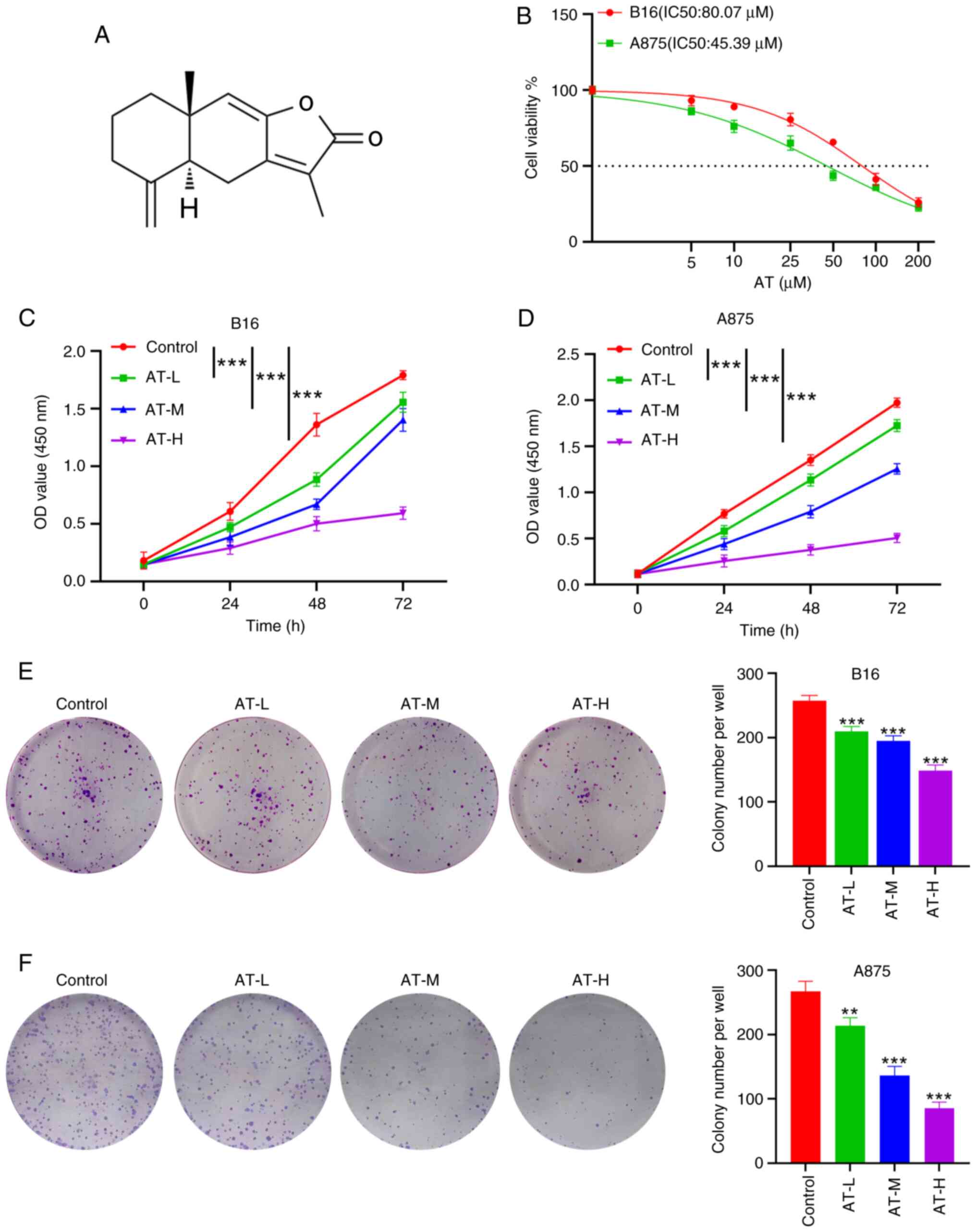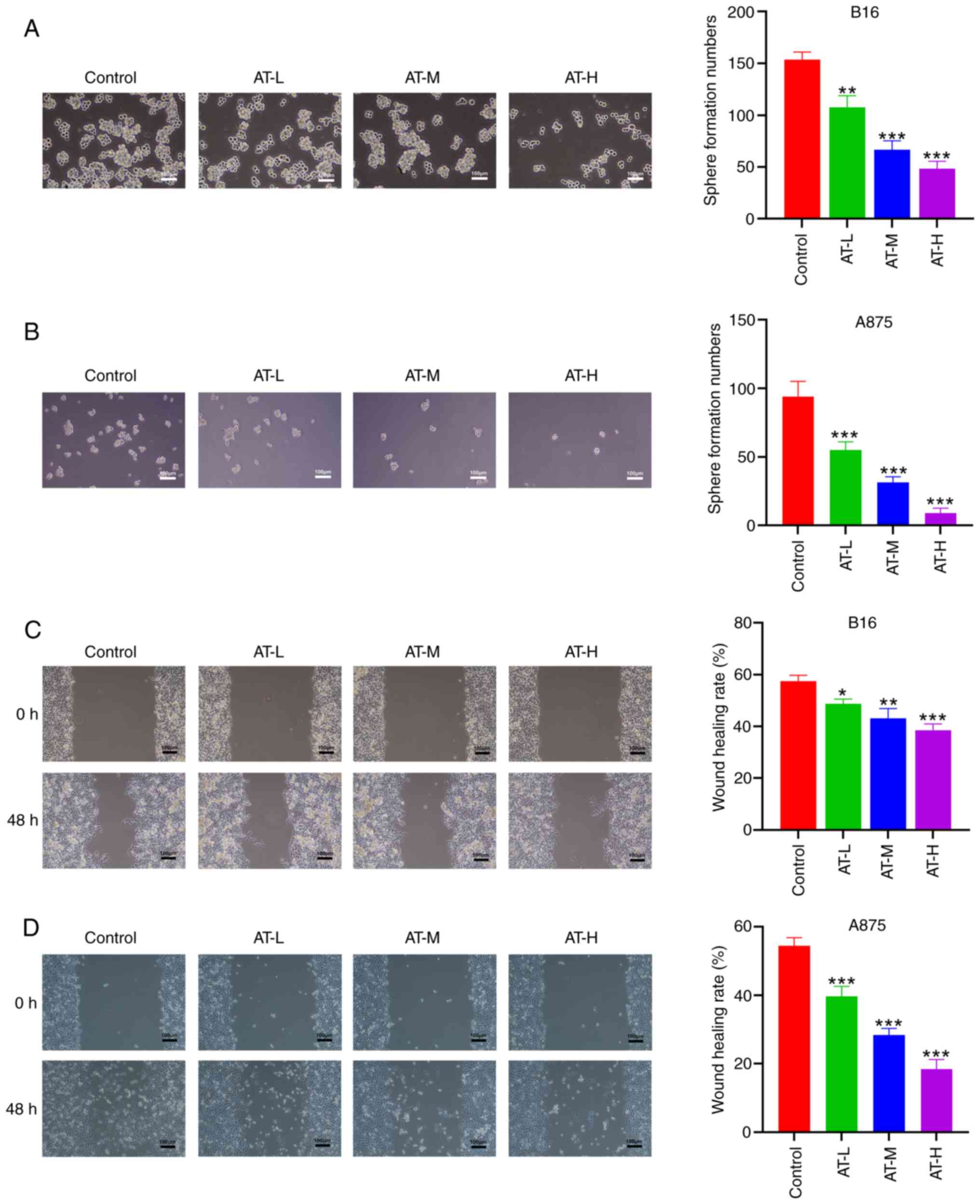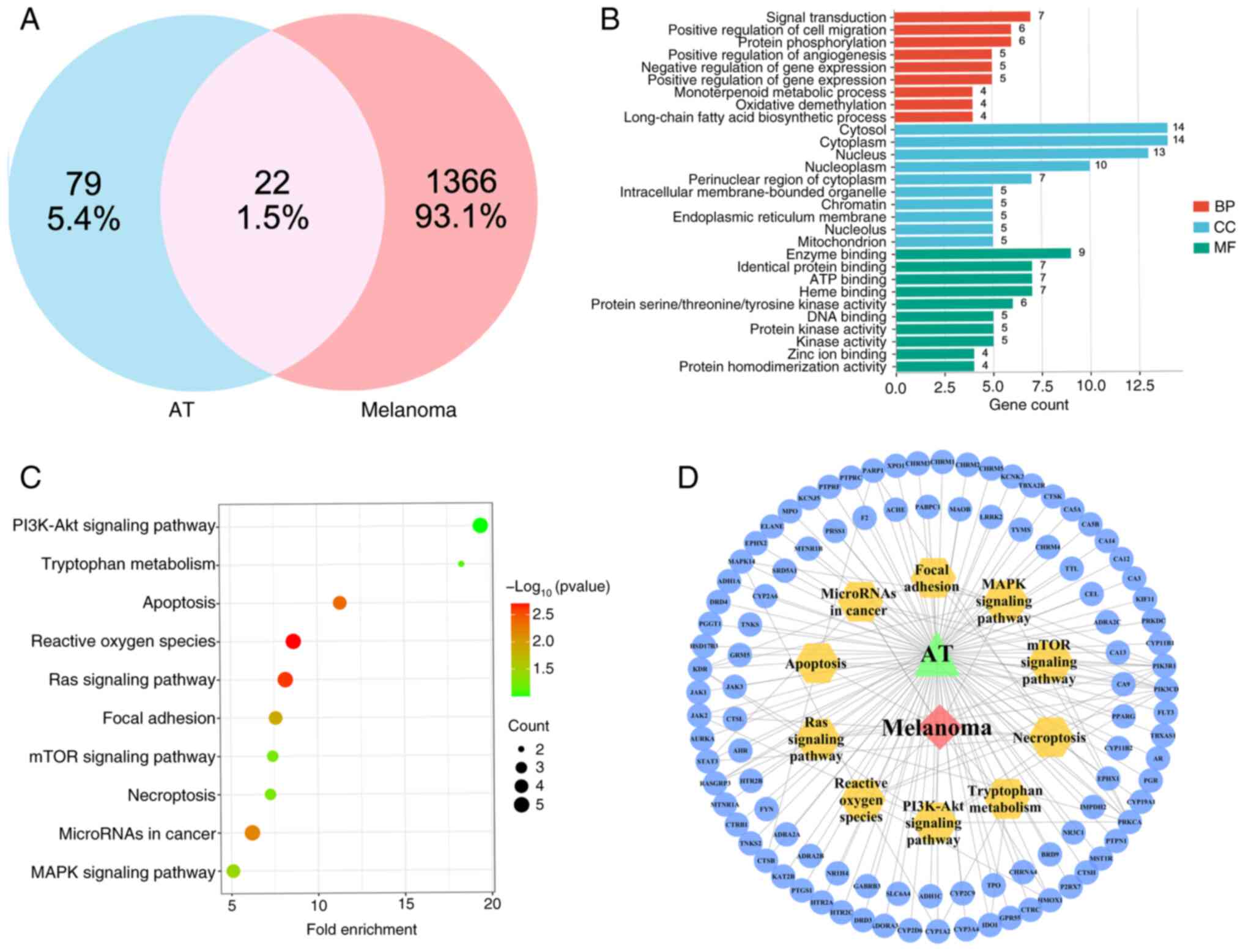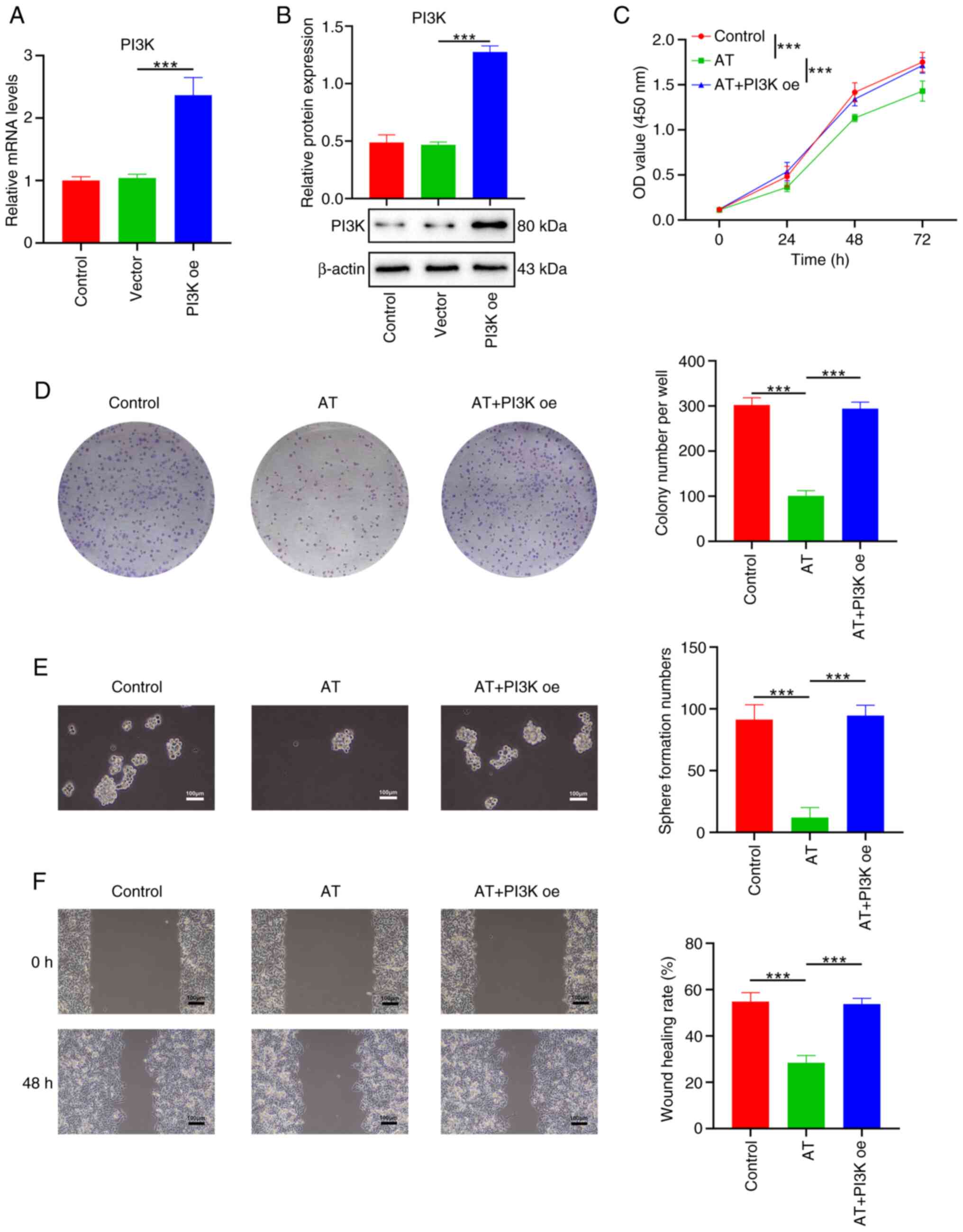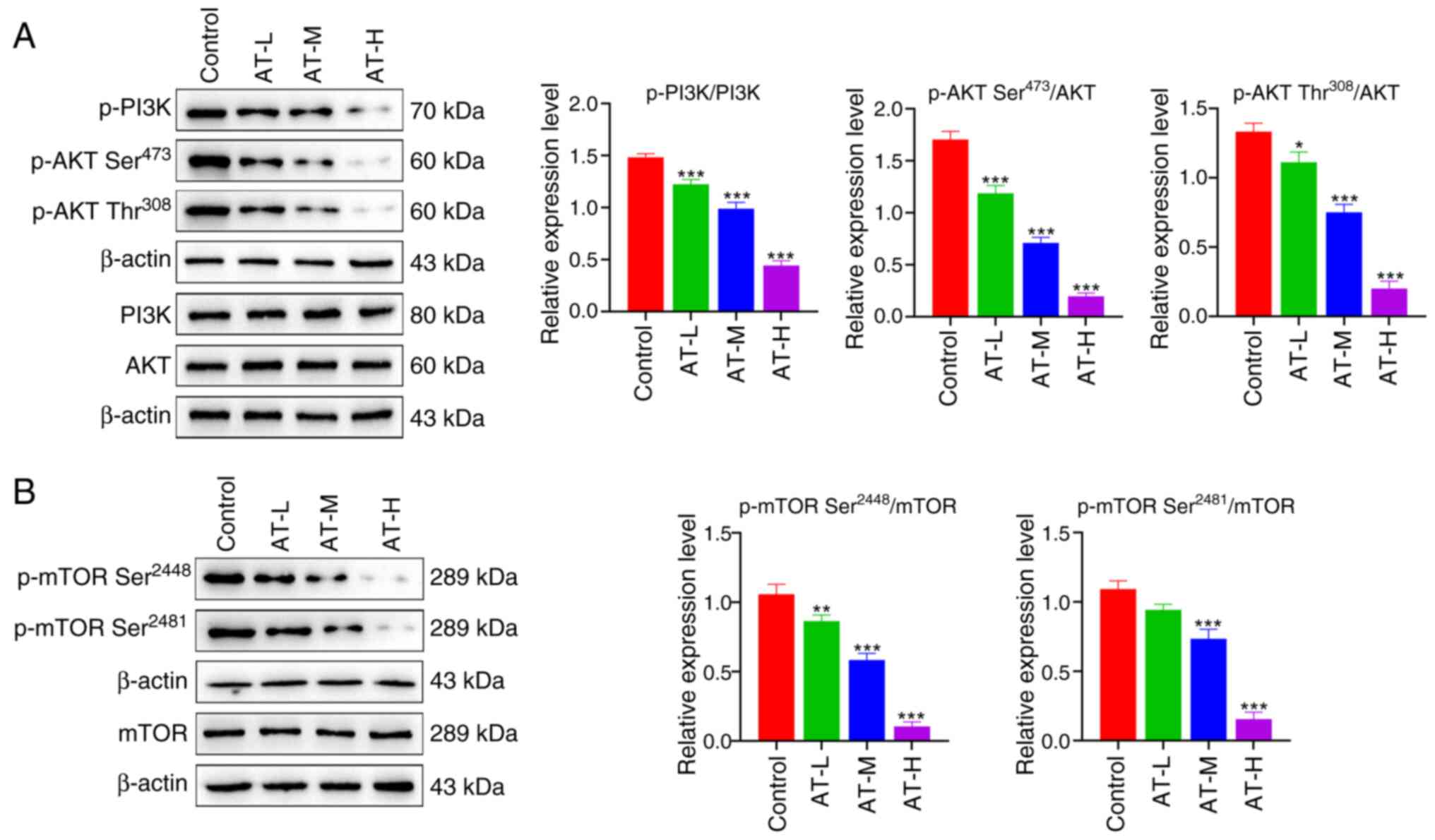|
1
|
Huang AC and Zappasodi R: A decade of
checkpoint blockade immunotherapy in melanoma: Understanding the
molecular basis for immune sensitivity and resistance. Nat Immunol.
23:660–670. 2022. View Article : Google Scholar : PubMed/NCBI
|
|
2
|
Schadendorf D, van Akkooi ACJ, Berking C,
Griewank KG, Gutzmer R, Hauschild A, Stang A, Roesch A and Ugurel
S: Melanoma. Lancet. 392:971–984. 2018. View Article : Google Scholar : PubMed/NCBI
|
|
3
|
Eddy K and Chen S: Overcoming immune
evasion in melanoma. Int J Mol Sci. 21:89842020. View Article : Google Scholar : PubMed/NCBI
|
|
4
|
Rubin KM, Vona K, Madden K, McGettigan S
and Braun IM: Side effects in melanoma patients receiving adjuvant
interferon alfa-2b therapy: A nurse's perspective. Support Care
Cancer. 20:1601–1611. 2012. View Article : Google Scholar : PubMed/NCBI
|
|
5
|
Hauschild A, Gogas H, Tarhini A, Middleton
MR, Testori A, Dréno B and Kirkwood JM: Practical guidelines for
the management of interferon-alpha-2b side effects in patients
receiving adjuvant treatment for melanoma: Expert opinion. Cancer.
112:982–994. 2008. View Article : Google Scholar : PubMed/NCBI
|
|
6
|
Hersey P, Tiffen JC and Gallagher SJ:
Shedding light on dabrafenib-induced fevers in patients with
melanoma. Lancet Oncol. 20:1637–1638. 2019. View Article : Google Scholar : PubMed/NCBI
|
|
7
|
Sloot S, Fedorenko IV, Smalley KS and
Gibney GT: Long-term effects of BRAF inhibitors in melanoma
treatment: Friend or foe? Expert Opin Pharmacother. 15:589–592.
2014. View Article : Google Scholar : PubMed/NCBI
|
|
8
|
Liu X, Li M, Wang X, Dang Z, Yu L, Wang X,
Jiang Y and Yang Z: Effects of adjuvant traditional Chinese
medicine therapy on long-term survival in patients with
hepatocellular carcinoma. Phytomedicine. 62:1529302019. View Article : Google Scholar : PubMed/NCBI
|
|
9
|
Wang R, Sun Q, Wang F, Liu Y, Li X, Chen
T, Wu X, Tang H, Zhou M, Zhang S, et al: Efficacy and safety of
Chinese herbal medicine on ovarian cancer after reduction surgery
and adjuvant chemotherapy: A systematic review and meta-analysis.
Front Oncol. 9:7302019. View Article : Google Scholar : PubMed/NCBI
|
|
10
|
Zhou Y, Wang M, Wang Z, Qiu J, Wang Y, Li
J, Dong F, Huang X, Zhao J and Xu T: Polysaccharides from hawthorn
fruit alleviate high-fat diet-induced NAFLD in mice by improving
gut microbiota dysbiosis and hepatic metabolic disorder.
Phytomedicine. 139:1564582025. View Article : Google Scholar : PubMed/NCBI
|
|
11
|
Hoang LS, Tran MH, Lee JS, Ngo QM, Woo MH
and Min BS: Inflammatory inhibitory activity of sesquiterpenoids
from atractylodes macrocephala Rhizomes. Chem Pharm Bull (Tokyo).
64:507–511. 2016. View Article : Google Scholar : PubMed/NCBI
|
|
12
|
Shu YT, Kao KT and Weng CS: In vitro
antibacterial and cytotoxic activities of plasma-modified
polyethylene terephthalate nonwoven dressing with aqueous extract
of Rhizome Atractylodes macrocephala. Mater Sci Eng C Mater Biol
Appl. 77:606–612. 2017. View Article : Google Scholar : PubMed/NCBI
|
|
13
|
Kou N, Cho H, Kim HE, Sun Q, Ahn K, Ji H,
Choi H and Kim O: Anti-cancer effect of Atractylodes macrocephala
extract by double induction of apoptotic and autophagic cell death
in head and neck cancer cells. Bangladesh J Pharmacol. 12:140–146.
2017. View Article : Google Scholar
|
|
14
|
Wang K, Huang W, Sang X, Wu X, Shan Q,
Tang D, Xu X and Cao G: Atractylenolide I inhibits colorectal
cancer cell proliferation by affecting metabolism and stemness via
AKT/mTOR signaling. Phytomedicine. 68:1531912020. View Article : Google Scholar : PubMed/NCBI
|
|
15
|
Long F, Lin H, Zhang X, Zhang J, Xiao H
and Wang T: Atractylenolide-I suppresses tumorigenesis of breast
cancer by inhibiting toll-like receptor 4-mediated nuclear
factor-κB signaling pathway. Front Pharmacol. 11:5989392020.
View Article : Google Scholar : PubMed/NCBI
|
|
16
|
Li Y, Wang Y, Liu Z, Guo X, Miao Z and Ma
S: Atractylenolide I induces apoptosis and suppresses glycolysis by
blocking the JAK2/STAT3 signaling pathway in colorectal cancer
cells. Front Pharmacol. 11:2732020. View Article : Google Scholar : PubMed/NCBI
|
|
17
|
Ye Y, Chao XJ, Wu JF, Cheng BC, Su T, Fu
XQ, Li T, Guo H, Tse AK, Kwan HY, et al: ERK/GSK3β signaling is
involved in atractylenolide I-induced apoptosis and cell cycle
arrest in melanoma cells. Oncol Rep. 34:1543–1548. 2015. View Article : Google Scholar : PubMed/NCBI
|
|
18
|
Xu H, Van der Jeught K, Zhou Z, Zhang L,
Yu T, Sun Y, Li Y, Wan C, So KM, Liu D, et al: Atractylenolide I
enhances responsiveness to immune checkpoint blockade therapy by
activating tumor antigen presentation. J Clin Invest.
131:e1468322021. View Article : Google Scholar : PubMed/NCBI
|
|
19
|
Khanal P and Patil BM: Integration of
network and experimental pharmacology to decipher the antidiabetic
action of Duranta repens L. J Integr Med. 19:66–77. 2021.
View Article : Google Scholar : PubMed/NCBI
|
|
20
|
Zeng P, Su HF, Ye CY, Qiu SW, Shi A, Wang
JZ, Zhou XW and Tian Q: A tau pathogenesis-based network
pharmacology approach for exploring the protections of Chuanxiong
Rhizoma in Alzheimer's disease. Front Pharmacol. 13:8778062022.
View Article : Google Scholar : PubMed/NCBI
|
|
21
|
Nogales C, Mamdouh ZM, List M, Kiel C,
Casas AI and Schmidt H: Network pharmacology: Curing causal
mechanisms instead of treating symptoms. Trends Pharmacol Sci.
43:136–150. 2022. View Article : Google Scholar : PubMed/NCBI
|
|
22
|
Zhao RL and He YM: Network pharmacology
analysis of the anti-cancer pharmacological mechanisms of Ganoderma
lucidum extract with experimental support using Hepa1-6-bearing C57
BL/6 mice. J Ethnopharmacol. 210:287–295. 2018. View Article : Google Scholar : PubMed/NCBI
|
|
23
|
Li ZH, Yu D, Huang NN, Wu JK, Du XW and
Wang XJ: Immunoregulatory mechanism studies of ginseng leaves on
lung cancer based on network pharmacology and molecular docking.
Sci Rep. 11:182012021. View Article : Google Scholar : PubMed/NCBI
|
|
24
|
Chen B, Liu C, Long H, Bai G, Zhu Y and Xu
H: N6-methyladenosine-induced long non-coding RNA PVT1
regulates the miR-27b-3p/BLM axis to promote prostate cancer
progression. Int J Oncol. 62:162023. View Article : Google Scholar : PubMed/NCBI
|
|
25
|
Safran M, Rosen N, Twik M, BarShir R,
Stein TI, Dahary D, Fishilevich S and Lancet D: The GeneCards
suite. Practical Guide to Life Science Databases. Abugessaisa I and
Kasukawa T: Springer Nature Singapore; Singapore: pp. 27–56. 2021,
View Article : Google Scholar
|
|
26
|
Wishart DS, Feunang YD, Guo AC, Lo EJ,
Marcu A, Grant JR, Sajed T, Johnson D, Li C, Sayeeda Z, et al:
DrugBank 5.0: A major update to the DrugBank database for 2018.
Nucleic Acids Res. 46:D1074–D1082. 2018. View Article : Google Scholar : PubMed/NCBI
|
|
27
|
Hamosh A, Amberger JS, Bocchini C, Scott
AF and Rasmussen SA: Online mendelian inheritance in man
(OMIM®): Victor McKusick's magnum opus. Am J Med Genet
A. 185:3259–3265. 2021. View Article : Google Scholar : PubMed/NCBI
|
|
28
|
Zhou Y, Zhang Y, Zhao D, Yu X, Shen X,
Zhou Y, Wang S, Qiu Y, Chen Y and Zhu F: TTD: Therapeutic target
database describing target druggability information. Nucleic Acids
Res. 52:D1465–D1477. 2024. View Article : Google Scholar : PubMed/NCBI
|
|
29
|
Huang DW, Sherman BT and Lempicki RA:
Systematic and integrative analysis of large gene lists using DAVID
bioinformatics resources. Nat Protoc. 4:44–57. 2009. View Article : Google Scholar : PubMed/NCBI
|
|
30
|
Huang DW, Sherman BT and Lempicki RA:
Bioinformatics enrichment tools: Paths toward the comprehensive
functional analysis of large gene lists. Nucleic Acids Res.
37:1–13. 2009. View Article : Google Scholar : PubMed/NCBI
|
|
31
|
Tianyu Z and Liying G: Identifying the
molecular targets and mechanisms of xuebijing injection for the
treatment of COVID-19 via network parmacology and molecular
docking. Bioengineered. 12:2274–2287. 2021. View Article : Google Scholar : PubMed/NCBI
|
|
32
|
Livak KJ and Schmittgen TD: Analysis of
relative gene expression data using real-time quantitative PCR and
the 2(−Delta Delta C(T)) method. Methods. 25:402–408. 2001.
View Article : Google Scholar : PubMed/NCBI
|
|
33
|
Chen P, Hsu WH, Han J, Xia Y and DePinho
RA: Cancer stemness meets immunity: From mechanism to therapy. Cell
Rep. 34:1085972021. View Article : Google Scholar : PubMed/NCBI
|
|
34
|
Sun SY: mTOR-targeted cancer therapy:
Great target but disappointing clinical outcomes, why? Front Med.
15:221–231. 2021. View Article : Google Scholar : PubMed/NCBI
|
|
35
|
Song HP, Li RL, Zhou C, Cai X and Huang
HY: Atractylodes macrocephala Koidz stimulates intestinal
epithelial cell migration through a polyamine dependent mechanism.
J Ethnopharmacol. 159:23–35. 2015. View Article : Google Scholar : PubMed/NCBI
|
|
36
|
Song HP, Hou XQ, Li RY, Yu R, Li X, Zhou
SN, Huang HY, Cai X and Zhou C: Atractylenolide I stimulates
intestinal epithelial repair through polyamine-mediated Ca(2+)
signaling pathway. Phytomedicine. 28:27–35. 2017. View Article : Google Scholar : PubMed/NCBI
|
|
37
|
Liu M, Wang RB, Xing JH and Tang YX:
Atractylenolide inhibits apoptosis and oxidative stress of
HTR-8/SVneo cells by activating MAPK/ERK signalling in
preeclampsia. Phytomedicine. 93:1537732021. View Article : Google Scholar : PubMed/NCBI
|
|
38
|
Du Z, Ma Z, Lai S, Ding Q, Hu Z, Yang W,
Qian Q, Zhu L, Dou X and Li S: Atractylenolide I ameliorates
acetaminophen-induced acute liver injury via the TLR4/MAPKs/NF-κB
signaling pathways. Front Pharmacol. 13:7974992022. View Article : Google Scholar : PubMed/NCBI
|
|
39
|
Fan M, Gu X, Zhang W, Shen Q, Zhang R,
Fang Q, Wang Y, Guo X, Zhang X and Liu X: Atractylenolide I
ameliorates cancer cachexia through inhibiting biogenesis of IL-6
and tumour-derived extracellular vesicles. J Cachexia Sarcopenia
Muscle. 13:2724–2739. 2022. View Article : Google Scholar : PubMed/NCBI
|
|
40
|
Waseh S and Lee JB: Advances in melanoma:
Epidemiology, diagnosis, and prognosis. Front Med (Lausanne).
10:12684792023. View Article : Google Scholar : PubMed/NCBI
|
|
41
|
Kibbi N, Kluger H and Choi JN: Melanoma:
Clinical presentations. Cancer Treat Res. 167:107–129. 2016.
View Article : Google Scholar : PubMed/NCBI
|
|
42
|
Fu XQ, Chou JY, Li T, Zhu PL, Li JK, Yin
CL, Su T, Guo H, Lee KW, Hossen MJ, et al: The JAK2/STAT3 pathway
is involved in the anti-melanoma effects of atractylenolide I. Exp
Dermatol. 27:201–204. 2018. View Article : Google Scholar : PubMed/NCBI
|
|
43
|
Castaneda M, den Hollander P, Kuburich NA,
Rosen JM and Mani SA: Mechanisms of cancer metastasis. Semin Cancer
Biol. 87:17–31. 2022. View Article : Google Scholar : PubMed/NCBI
|
|
44
|
Wei CY, Zhu MX, Yang YW, Zhang PF, Yang X,
Peng R, Gao C, Lu JC, Wang L, Deng XY, et al: Downregulation of
RNF128 activates Wnt/βMani-catenin signaling to induce cellular EMT
and stemness via CD44 and CTTN ubiquitination in melanoma. J
Hematol Oncol. 12:212019. View Article : Google Scholar : PubMed/NCBI
|
|
45
|
Gong Q, Yu H, Ding G, Ma J, Wang Y and
Cheng X: Suppression of stemness and enhancement of
chemosensibility in the resistant melanoma were induced by
Astragalus polysaccharide through PD-L1 downregulation. Eur J
Pharmacol. 916:1747262022. View Article : Google Scholar : PubMed/NCBI
|
|
46
|
Kalluri R and Weinberg RA: The basics of
epithelial-mesenchymal transition. J Clin Invest. 119:1420–1428.
2009. View Article : Google Scholar : PubMed/NCBI
|
|
47
|
Li B, Shen W, Peng H, Li Y, Chen F, Zheng
L, Xu J and Jia L: Fibronectin 1 promotes melanoma proliferation
and metastasis by inhibiting apoptosis and regulating EMT. Onco
Targets Ther. 12:3207–3221. 2019. View Article : Google Scholar : PubMed/NCBI
|
|
48
|
Pan G, Liu Y, Shang L, Zhou F and Yang S:
EMT-associated microRNAs and their roles in cancer stemness and
drug resistance. Cancer Commun (Lond). 41:199–217. 2021. View Article : Google Scholar : PubMed/NCBI
|
|
49
|
Battula VL, Evans KW, Hollier BG, Shi Y,
Marini FC, Ayyanan A, Wang RY, Brisken C, Guerra R and Andreeff M
SA: Epithelial-mesenchymal transition-derived cells exhibit
multilineage differentiation potential similar to mesenchymal stem
cells. Stem Cells. 28:1435–1445. 2010. View Article : Google Scholar : PubMed/NCBI
|
|
50
|
Qiao P and Tian Z: Atractylenolide I
inhibits EMT and enhances the antitumor effect of cabozantinib in
prostate cancer via targeting Hsp27. Front Oncol. 12:10848842022.
View Article : Google Scholar : PubMed/NCBI
|
|
51
|
Smalley KS: Understanding melanoma
signaling networks as the basis for molecular targeted therapy. J
Invest Dermatol. 130:28–37. 2010. View Article : Google Scholar : PubMed/NCBI
|
|
52
|
Wang Y, Chen SJ, Ma T, Long Q, Chen L, Xu
KX and Cao Y: Promotion of apoptosis in melanoma cells by taxifolin
through the PI3K/AKT signaling pathway: Screening of natural
products using WGCNA and CMAP platforms. Int Immunopharmacol.
138:1125172024. View Article : Google Scholar : PubMed/NCBI
|
|
53
|
Sinnberg T, Lasithiotakis K, Niessner H,
Schittek B, Flaherty KT, Kulms D, Maczey E, Campos M, Gogel J,
Garbe C and Meier F: Inhibition of PI3K-AKT-mTOR signaling
sensitizes melanoma cells to cisplatin and temozolomide. J Invest
Dermatol. 129:1500–1515. 2009. View Article : Google Scholar : PubMed/NCBI
|
|
54
|
Yu R, Yu BX, Chen JF, Lv XY, Yan ZJ, Cheng
Y and Ma Q: Anti-tumor effects of Atractylenolide I on bladder
cancer cells. J Exp Clin Cancer Res. 35:402016. View Article : Google Scholar : PubMed/NCBI
|
|
55
|
Wang J, Zhang P, Zhang J, Ma Z, Tian X,
Liu Y, Lv G and Qu L: Atractylenolide-1 targets FLT3 to regulate
PI3K/AKT/HIF1-α pathway to inhibit osteogenic differentiation of
human valve interstitial cells. Front Pharmacol. 13:8997752022.
View Article : Google Scholar : PubMed/NCBI
|
|
56
|
Akinleye A, Avvaru P, Furqan M, Song Y and
Liu D: Phosphatidylinositol 3-kinase (PI3K) inhibitors as cancer
therapeutics. J Hematol Oncol. 6:882013. View Article : Google Scholar : PubMed/NCBI
|
|
57
|
Koyasu S: The role of PI3K in immune
cells. Nat Immunol. 4:313–319. 2003. View Article : Google Scholar : PubMed/NCBI
|
|
58
|
Yan Y, Chou GX, Hui W, Chu JH, Fong WF and
Yu ZL: Effects of sesquiterpenes isolated from largehead
atractylodes rhizome on growth, migration, and differentiation of
B16 melanoma cells. Integr Cancer Ther. 10:92–100. 2011. View Article : Google Scholar : PubMed/NCBI
|
|
59
|
Osaki M, Oshimura M and Ito H: PI3K-Akt
pathway: Its functions and alterations in human cancer. Apoptosis.
9:667–676. 2004. View Article : Google Scholar : PubMed/NCBI
|
|
60
|
Liu Y, Jia Z, Dong L, Wang R and Qiu G: A
randomized pilot study of atractylenolide I on gastric cancer
cachexia patients. Evid Based Complement Alternat Med. 5:337–344.
2008. View Article : Google Scholar : PubMed/NCBI
|
|
61
|
Huang JM, Zhang GN, Shi Y, Zha X, Zhu Y,
Wang MM, Lin Q, Wang W, Lu HY, Ma SQ, et al: Atractylenolide-I
sensitizes human ovarian cancer cells to paclitaxel by blocking
activation of TLR4/MyD88-dependent pathway. Sci Rep. 4:38402014.
View Article : Google Scholar : PubMed/NCBI
|















